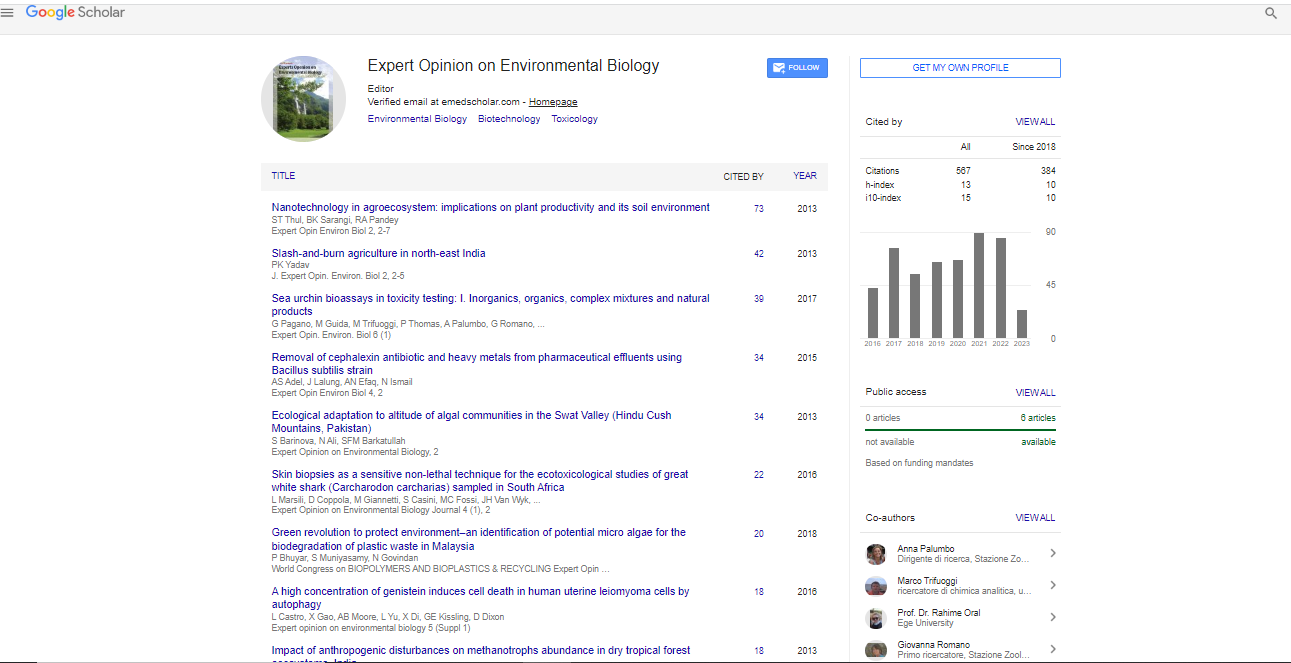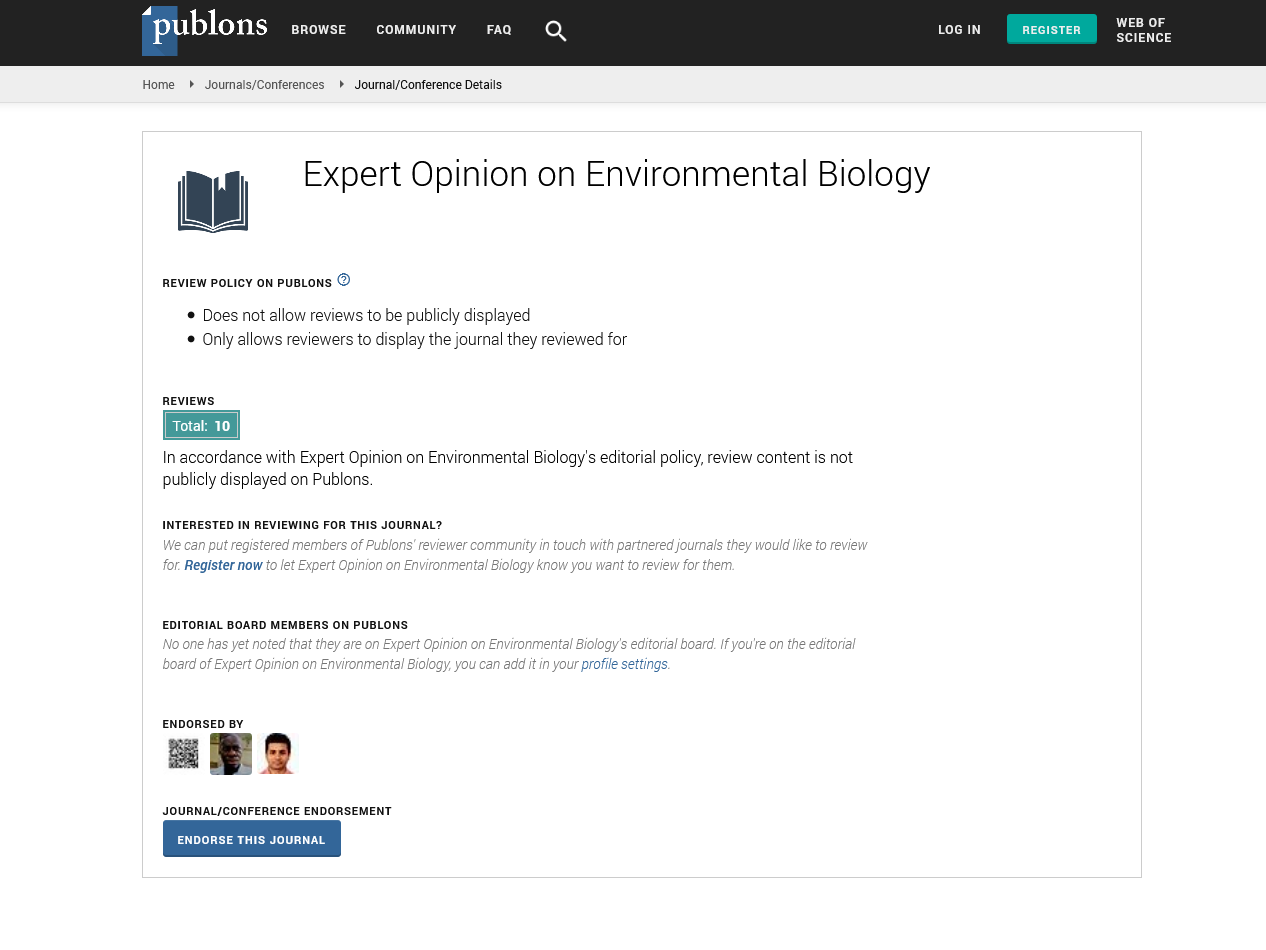Efficient adsorbent graphene material from agricultural waste for DR- 81 decontamination
Eslam Salama
Environment and Natural Materials Research Institute (ENMRI), City of Scientific Research and Technological Applications (SRTA-City), New Borg
El-Arab City, Alexandria 21934, Egypt
: Expert Opin Environ Biol
Abstract
In this investigation, we presented a cost-effective method for producing high-content carbon material like graphene (G) through the gasification of agricultural waste such as palm leaves. Graphene was further synthesized from the produced carbon material using a muffle furnace at 800°C for 3 h. The synthesized material was characterized using Fourier-transform infrared spectroscopy (FTIR), X-ray diffraction (XRD), field emission transmission electron microscopy (FETEM), thermal gravimetrical analysis (TGA), and Brunauer-Emmett-Teller (BET) surface area analysis. The prepared material was employed as an efficient adsorbent for direct red 81 (DR-81) dye from wastewater. Several processing variables, including pH, contact time, and dosage were studied to examine the decontamination of DR-81 anionic dye onto the fabricated graphene. The optimal dosage from the synthesized graphene for DR-81 decontamination was 1.0 g/L at pH=7 after 30 min. The maximum sorption capacity of the prepared graphene toward the DR-81 was 132.14 mg/g at pH 7.0 and 25°C. These promising findings supported the use of synthesized graphene as a superior adsorbent material for DR-81 decontamination from wastewater.
Biography
Eslam Salama is from Environment and Natural Materials Research Institute (ENMRI), City of Scientific Research and Technological Applications (SRTA-City), New Borg El-Arab City, Alexandria 21934, Egypt.
 Spanish
Spanish  Chinese
Chinese  Russian
Russian  German
German  French
French  Japanese
Japanese  Portuguese
Portuguese  Hindi
Hindi 
